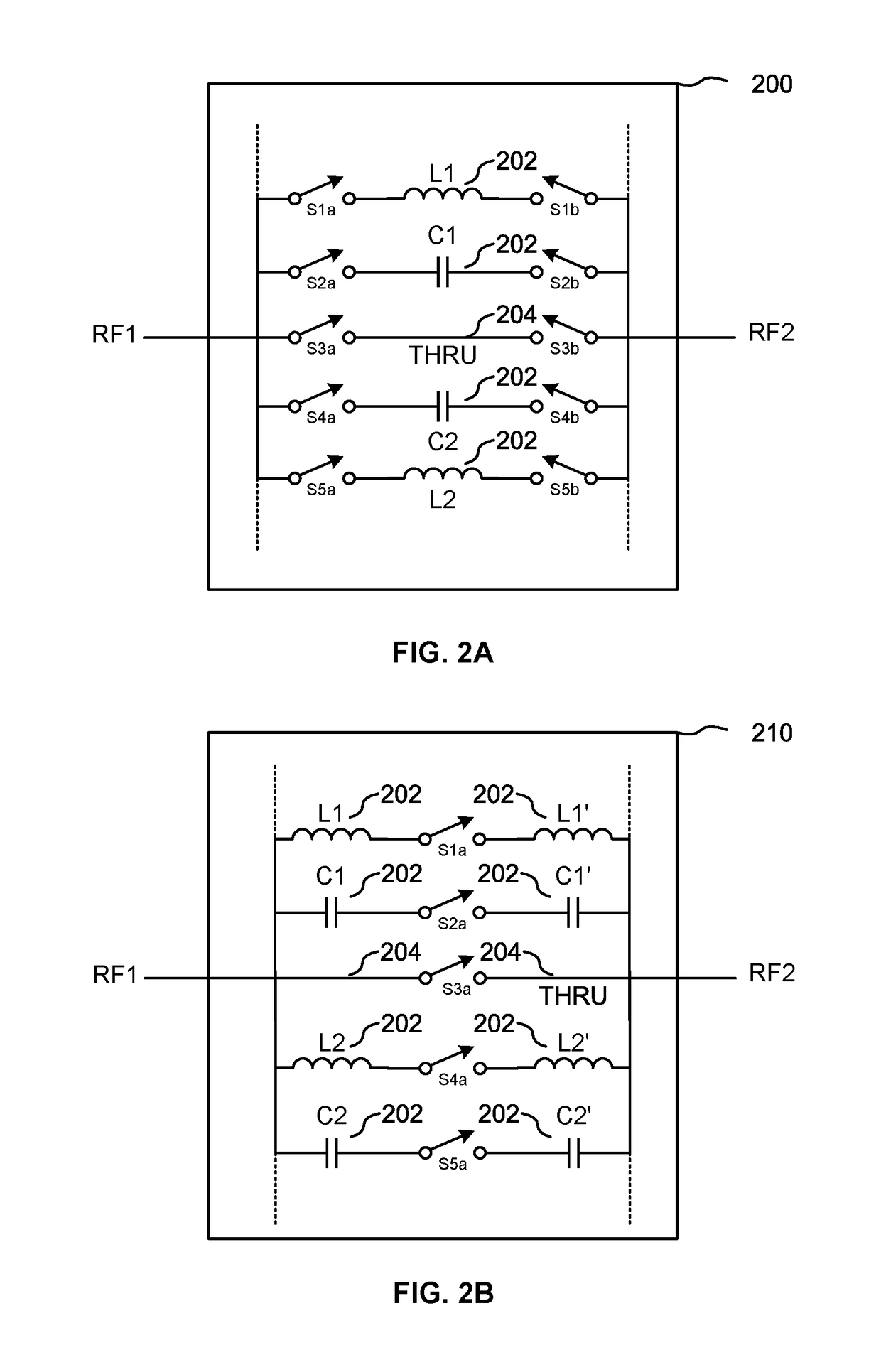Low loss multi-state phase shifter
a phase shifter and multi-state technology, applied in the field of programmable multi-state rf phase shifter circuits, can solve the problems of series-cell phase shifter architectures suffering from excessive insertion loss (il), il problem is exacerbated, return loss also becomes worse, etc., to reduce the number of series-connected, low insertion loss (il), and good return loss
- Summary
- Abstract
- Description
- Claims
- Application Information
AI Technical Summary
Benefits of technology
Problems solved by technology
Method used
Image
Examples
first embodiment
[0026]FIG. 2A is a block diagram of a multi-state phase shifter circuit 200 having low insertion loss and good return loss in accordance with the present invention. The illustrated phase shifter circuit 200 has two ports, RF1, RF2 connected by a plurality of n parallel signal paths each comprising a pair of switches Sna and Snb and an associated phase shift element 202. In the illustrated example, the phase shift elements 202 comprise, for example, one or more inductors Ln, one or more capacitors Cn, or one or more transmission lines, each series connected between corresponding switch pairs Sna-Snb. An optional parallel signal path may comprise a THRU conductor 204 (e.g., a simple wire or IC trace or similar conductor) series connected between corresponding switch pairs Sna-Snb. The illustrated phase shift elements 202 may be physically located on the same integrated circuit (IC) die as the switch pairs Sna-Snb, or an IC may be configured with conductive pads to enable connection of...
second embodiment
[0031]FIG. 2B is a block diagram of a multi-state phase shifter circuit 210 having low insertion loss and good return loss in accordance with the present invention. In this embodiment, the phase shifter circuit 210 has two ports, RF1, RF2 connected by a plurality of n parallel signal paths each comprising a switch Sna and at least one associated phase shift element 202. In the illustrated example, the phase shift elements 202 comprise, for example, one or more inductors Ln, Ln′, one or more capacitors Cn, Cn′, or one or more transmission lines series connected with a corresponding switch Sna. An optional parallel signal path may comprise a THRU conductor 204 in series with a corresponding switch Sna.
[0032]In each signal path, it would generally be preferred to “split” the phase shift elements 202 as shown—for example, with inductor pairs Ln, Ln′ or capacitor pairs Cn, Cn′ bracketing a switch Sna—so as to provide a “balanced” symmetric circuit with respect to ports RF1 and RF2. In pa...
PUM
 Login to View More
Login to View More Abstract
Description
Claims
Application Information
 Login to View More
Login to View More - R&D
- Intellectual Property
- Life Sciences
- Materials
- Tech Scout
- Unparalleled Data Quality
- Higher Quality Content
- 60% Fewer Hallucinations
Browse by: Latest US Patents, China's latest patents, Technical Efficacy Thesaurus, Application Domain, Technology Topic, Popular Technical Reports.
© 2025 PatSnap. All rights reserved.Legal|Privacy policy|Modern Slavery Act Transparency Statement|Sitemap|About US| Contact US: help@patsnap.com



